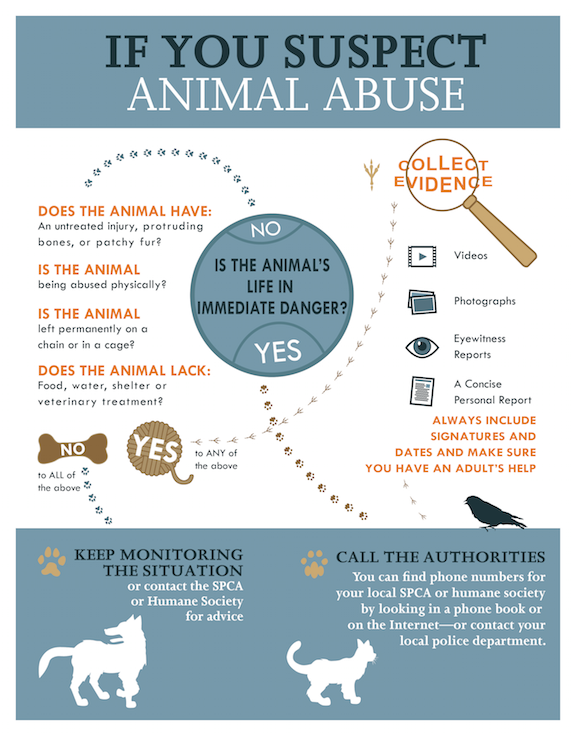Animal cruelty is a topic that often elicits strong emotions and fervent discussions. The question arises: can one contact Child Protective Services (CPS) regarding instances of animal cruelty? This query, while seemingly straightforward, opens up a myriad of considerations regarding the complex interplay between child welfare and animal welfare. As society becomes increasingly aware of the injustices faced by both vulnerable children and animals, it begs to explore how these issues intersect and the potential ramifications of neglecting one in favor of the other.
To engage with the aforementioned question, one must comprehend the definitions and responsibilities associated with CPS. Typically, Child Protective Services exist to safeguard children from abuse or neglect in their households. However, the disturbing reality is that environments where animals suffer often signify deeper issues within families, such as violence, neglect, or substance abuse. Consequently, understanding how animal cruelty can indirectly relate to child welfare is crucial.
Consider a household where an animal is subjected to neglect or cruelty. This situation may arise from a caregiver who has lost the ability to adequately care for their pets, often due to personal issues such as mental illness or addiction. The pivotal question that emerges is whether the welfare of the child in this environment is also at risk. Does witnessing or experiencing animal cruelty indicate a higher likelihood of child abuse, and thus warrant a call to CPS?
Research suggests a significant correlation between animal cruelty and other forms of familial violence. Studies have consistently shown that environments rife with animal neglect often coincide with child abuse. Individuals who manifest cruelty towards animals may exhibit similar aggressive behaviors towards children, posing a multifaceted challenge for mental health professionals, social workers, and law enforcement. The ramifications of neglecting to intervene in such situations can be dire, as both child and animal welfare could be compromised simultaneously.
Now, let’s consider the legal framework surrounding these issues. Various states have laws that allow the intersection of animal control and child welfare cases. Some regions require law enforcement to investigate reports of animal cruelty, particularly if children are present in the household. As such, an individual witnessing animal cruelty may feel compelled to report it, knowing that potential intervention may protect a child at risk as well.
However, the act of reporting can be shrouded in uncertainty. An individual may grapple with questions such as: “What if my report leads to unnecessary repercussions for a family?” or “Will my report be taken seriously?” These ethical dilemmas can act as barriers to action, ultimately allowing instances of neglect to persist without intervention. It is critical to recognize the ramifications of inaction; failing to report can lead to an escalation of abuses, further endangering both the animals and the children in that household.
There exist differing perspectives on whether CPS should directly handle cases of animal cruelty. Some argue that animal welfare concerns ought to be managed by animal control agencies or humane societies rather than a governmental body focused on child protection. Others contend that due to the aforementioned correlations, CPS should expand its mandate to address various aspects of family wellbeing, recognizing the holistic nature of welfare that encompasses both humans and animals.
In light of this intersection, it is imperative to examine what constitutes appropriate intervention strategies. Education plays a vital role here. Community programs designed to enlighten families about responsible pet ownership can serve as preventive measures. It may nurture compassion within households, reducing the incidence of animal cruelty while simultaneously promoting an environment of care for all living beings. Advocating for humane education in schools fosters empathy and encourages future generations to treat both people and animals with respect.
In addition to education, collaboration stands as a vital mechanism. The development of cooperative relationships between animal welfare organizations and child protective services can enhance the understanding and handling of cases where animal welfare intersects with child welfare. Such partnerships enable a multi-faceted approach to intervention, ensuring both children and animals receive the protective measures they require.
Moreover, the judicial system could play an essential role in promoting change in family environments marked by neglect. Stricter penalties for animal abuse that also emphasize the psychological impact on children can deter future instances of both child and animal neglect. Courts may mandate counseling or educational programs for offenders, driving home the importance of empathy and respect for all living beings.
The conversation surrounding whether one can call CPS for animal cruelty is a complex and evolving discourse requiring nuanced understanding. More than merely a procedural question, it taps into the very fabric of societal values regarding the treatment of our most vulnerable members, be they human or animal. Ultimately, recognizing the interconnectedness of child and animal welfare can lead to a more compassionate society, where both children and animals are afforded the respect and protection they deserve.
The challenge remains: How can we each contribute to an environment where both children and animals are protected from cruelty? Addressing this challenge involves active participation, critical thinking, and a commitment to advocating for a world in which empathy prevails over neglect.









